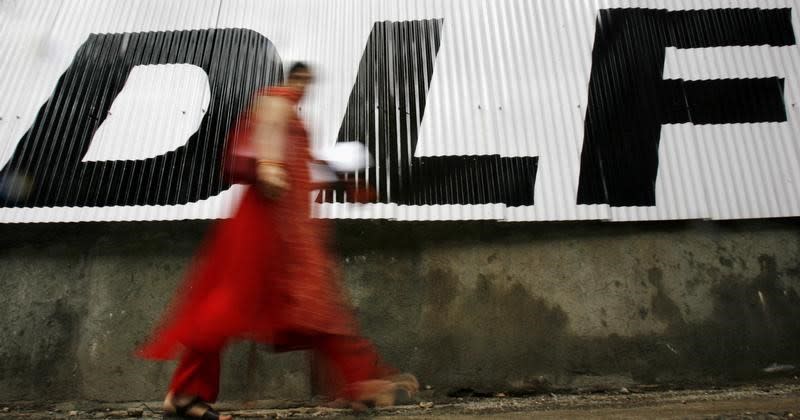Singapore's Hopeful, Worrying India Property Play

Singapore’s sovereign wealth fund is buying one-third of the rental property unit of India’s largest developer. The $1.4 billion investment will be viewed as a turnaround moment in the country’s debt-laden real-estate business. But it also points to the industry’s biggest challenge: poor sales.
GIC Pte’s check will give the controlling shareholders of DLF Ltd. as much as $1.9 billion. They plan to plow back the bulk of this windfall into the flagship as fresh equity. To that, add a share sale to other investors — probably a rights offer — and the beleaguered builder’s net debt-to-equity ratio would fall from 102 percent at the end of March to 33 percent, according to HDFC Securities.
Why is such a thick cushion of loss absorption necessary? Only a handful of Chinese developers in the $5 billion-plus market-capitalization category have more equity than net debt. Developers such as Sunac China Holdings Ltd., with an estimated debt-to-equity ratio of 349 percent, are bulking up even amid significant investor concerns about a supply overhang. By comparison, India is under-built and less urbanized. Selling first homes to a growing middle class should be less tricky.
That isn’t the case, however. Earlier this month, DLF reported a 57 percent slump in profit for the June quarter. Although the builder has been battling lackluster demand for four years, the recent slowdown came after it stopped sales in May to make projects compliant with a new consumer-protection law.
That law will eventually restore buyers’ trust in developers’ promises — but it will cause some disruption meanwhile. There’s also a possibility that India’s new corporate bankruptcy code will give frustrated apartment buyers the same rights in insolvency as secured creditors, further raising funding costs for builders. All this when the inventory of unsold homes in key Indian cities still ranges from 40 to 60 months of sales.
Investors are shrugging off the weakness, betting on a potential housing boom that CLSA India Pvt. pegs at $1.3 trillion over the next seven years.
Bondholders are focused on the more mundane reality. Take the DLF deal. GIC, which recently made good money exiting its China warehouse venture, may be snapping up an interest in a couple of shopping malls in India’s national capital region with a 99 percent tenancy rate and steady rents, and a claim on good-quality office buildings. However, the sale of a hefty chunk of the strong rental business to GIC means the builder’s own share of steady revenue will shrink, before new properties are ready.
Once the Indian housing market does pick up, the focus of developers will shift from deleveraging to growth. For now, though, all DLF wants to do is push down its $4 billion net debt to below $1 billion; two-thirds of that would be serviced by its own rent-earning property pool, leaving only about $300 million as development debt.
When the nation’s biggest builder by market value is so cautious, it isn’t hard to see why India’s bank lending growth is hovering near a record low. Prudence is trumping animal spirits. GIC’s investment will enable DLF to be seen as a better risk. Making use of that creditworthiness for the next opportunity will have to wait.
This column does not necessarily reflect the opinion of Bloomberg LP and its owners.
To contact the author of this story: Andy Mukherjee in Hong Kong at amukherjee@bloomberg.net To contact the editor responsible for this story: Paul Sillitoe at psillitoe@bloomberg.net
© 2017 Bloomberg L.P

 Yahoo Finance
Yahoo Finance 